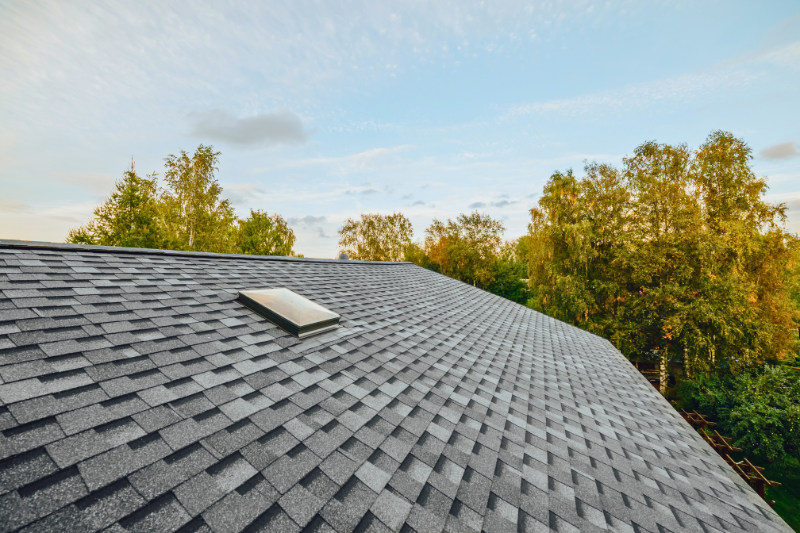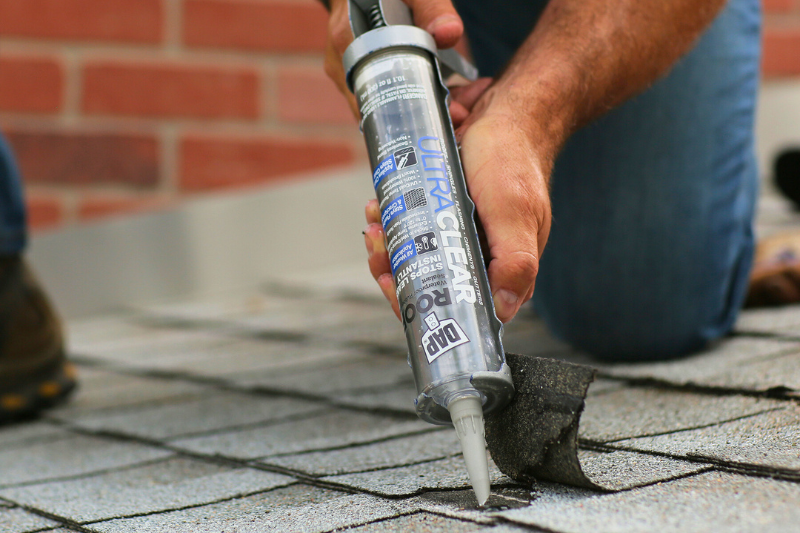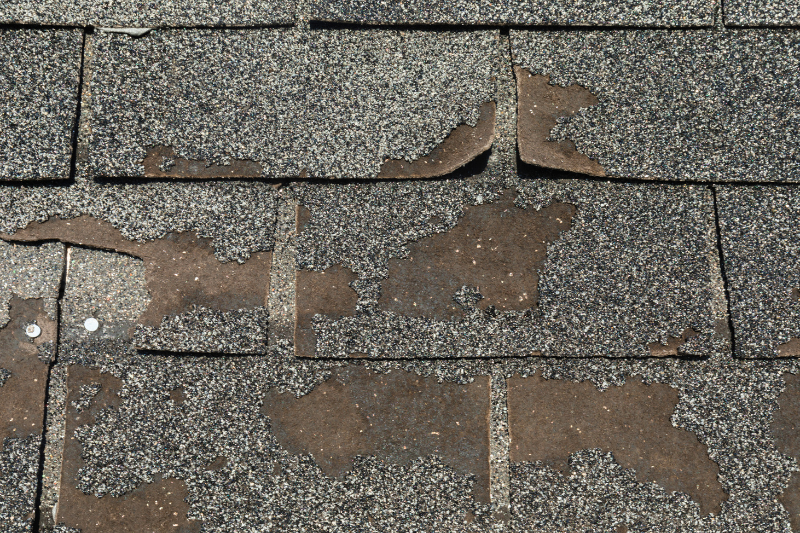The Role of Sealants in Protecting Your Roof
Your roof is your home’s first line of defence against the elements. It shields you and your family from rain, snow, sun, and wind while keeping your home safe and dry. But even the sturdiest roofs can fall victim to leaks, weather damage, and wear over time. Thankfully, there's a simple, cost-effective solution to help keep your roof in peak condition and extend its lifespan—sealants.
This blog will guide you through how roof sealants protect your home, their applications, types, and the best practices for using them. Plus, we'll share maintenance tips to ensure your roof remains robust for years to come. Let's explore how this essential tool can save your home and wallet.

Why Roof Sealants Are Essential
A roof sealant is a specialized product designed to enhance the durability and weather resistance of your roof. These sealants serve as a waterproof barrier, protect surfaces from UV rays, and fill cracks or weak spots that may otherwise lead to damage.
Here’s why they’re so essential:
- Waterproofing: Sealants prevent water infiltration, which can lead to costly damage like rot, mould, and leaks.
- UV Protection: They shield roofing materials from harmful UV rays that can cause cracking, fading, or other wear.
- Energy Efficiency: Sealants help maintain consistent temperatures inside your home by reducing air leakage. This can lower your energy bills and make your home more environmentally friendly.
- Structural Integrity: They reinforce your roof’s strength and help prevent small issues from escalating into major repairs.
Sealants are a cost-effective way to protect one of your home’s most valuable assets.
Common Applications of Roof Sealants
Wondering where and how sealants work their protective magic? Here's a look at their most common applications:
Preventing Leaks
Sealants are your best defence against leaks in vulnerable areas, such as:
- Roof joints and seams
- Around chimneys, vents, and skylights
- Ridge caps and valleys
By filling gaps and cracks, sealants keep water from finding its way into your home.
Protecting Against Weather Damage
Canadian winters can be brutal, with heavy snow and ice wreaking havoc on roofs. Fortunately, roof sealants stand up to extreme weather conditions, from heavy rainfall to intense sunlight, making them your roof's armour against the elements.
Quick Fixes for Minor Issues
If you’ve noticed minor cracks or small areas of damage on your roof, a sealant can be an excellent DIY fix. They allow you to address these issues without the need for costly replacements or professional repairs.
Types of Roof Sealants and Their Uses
Selecting the right sealant depends on your roof type, climate, and the specific issues you want to tackle. Let's break down the different types of roof sealants and their unique strengths.

ULTRA CLEAR Flexible All-Purpose Waterproof Sealant
This ultra-elastic sealant, made from a synthetic rubber base, delivers exceptional UV resistance and waterproofing capabilities while maintaining a crystal-clear finish for a clean, polished appearance. It can be applied to both wet and dry surfaces and is instantly water-ready, ensuring it won’t wash away in the rain.
- Ideal Uses: Skylights, roof penetrations, shingles, flashing, gutters, eaves, and more
- Clearer than silicone, non-yellowing
- Mould and mildew resistant after curing
- Strong multi-surface adhesion and long-lasting durability
ROOF Waterproof Asphalt Filler & Sealant
Asphalt shingles are the most popular choice in Canada, thanks to their exceptional resistance to extreme temperature fluctuations. These shingles effectively deflect sunlight and heat, regardless of colour, making them an excellent and energy-efficient roofing option.
Similarly, our asphalt roof sealant offers durable performance, resisting cracking, crumbling, and hardening throughout the seasons. The thick, non-sagging formula is easy to apply on both wet and dry surfaces, making it perfect for emergency leak repairs.
- Ideal Uses: Asphalt shingles and rolled roofing, spotting shingle tabs, repairing minor roof leaks, and a variety of roof penetrations
- Excellent adhesion to many materials
- Ready-to-use – no mixing required
POLYURETHANE Premium Construction Adhesive Sealant
Polyurethane delivers outstanding water resistance, combined with strong adhesion and flexibility, making it an excellent choice for areas with heavy rain or snow. It is versatile enough for use both above and below the waterline, and its cost-to-performance ratio makes it a popular choice in roofing applications.
- Ideal Uses: Expansion joints, vents, common roofing detail applications, flashing, eaves, and more
- Elastomeric – accommodates up to 70% total joint movement
- Provides impact and cut resistance
- Paintable
AMP Advanced Modified Polymer Gutter & Flashing Sealant
AMP is an innovative hybrid sealant that combines the strengths of traditional acrylic and silicone sealants with an advanced modified polymer base—it offers exceptional adhesion and flexibility. This sealant can be applied to wet or dry surfaces, is rain-ready in just 30 minutes, and can be used in temperatures as low as -17°C.
- Ideal Uses: Chimneys, skylights, roof vents, ducts, corrugated roofing, flashing, drain spouts, and more
- Exceptional multi-surface bonding, especially on non-porous substrates
- Low odour and VOC-compliant for safe and easy application
Mistakes to Avoid When Using Roof Sealants
Applying roof sealants isn’t complicated, but a few common mistakes can compromise their effectiveness. Here are tips on what to avoid and how to ensure success.
Ignoring Surface Prep
Always clean the surface thoroughly to remove dirt, old caulk, or loose debris. A clean surface enhances adhesion.
Using the Wrong Sealant
Choose a sealant suited to your roof material and needs—compatible substrates and recommended uses can be found in the Technical Data Sheet for all our products.
Applying in Poor Weather
Sealants are typically applied to dry surfaces in mild weather, but many of DAP's roof sealants stand out with their ability to bond to wet surfaces and perform across varying temperatures. Always check the product specifications for optimal results.

Maintenance Tips for a Sealant-Protected Roof
Even the best sealants require occasional maintenance to keep your roof in tip-top shape. Follow these simple tips to maximize the lifespan of your sealant and roof.
Regular Inspections
Check your roof and sealant for any signs of peeling, cracking, or wear. Inspect especially after harsh weather events.
Timely Repairs
Address any damaged areas promptly to avoid problems escalating into larger repairs.
Prepare Ahead of Weather Changes
Reinforce vulnerable areas of your roof with fresh sealant ahead of snowstorms or summer heat waves.
Celebrate National Roofing Week in the first week of June by giving your roof the care and attention it deserves. This proactive approach can save you thousands in long-term roof costs and stress down the road.
Sources
Reece, Z. (2022, December 12). What are the top 3 sealants for roof repairs?. Colony Roofers. https://colonyroofers.com/learningcenter/what-are-the-top-3-sealants-for-roof-repairs
The top 7 roof sealants for roof repairs?. Secured Roofing & Solar. (2024, September 11). https://securedroofingandsolar.com/blog/roof-sealant/
